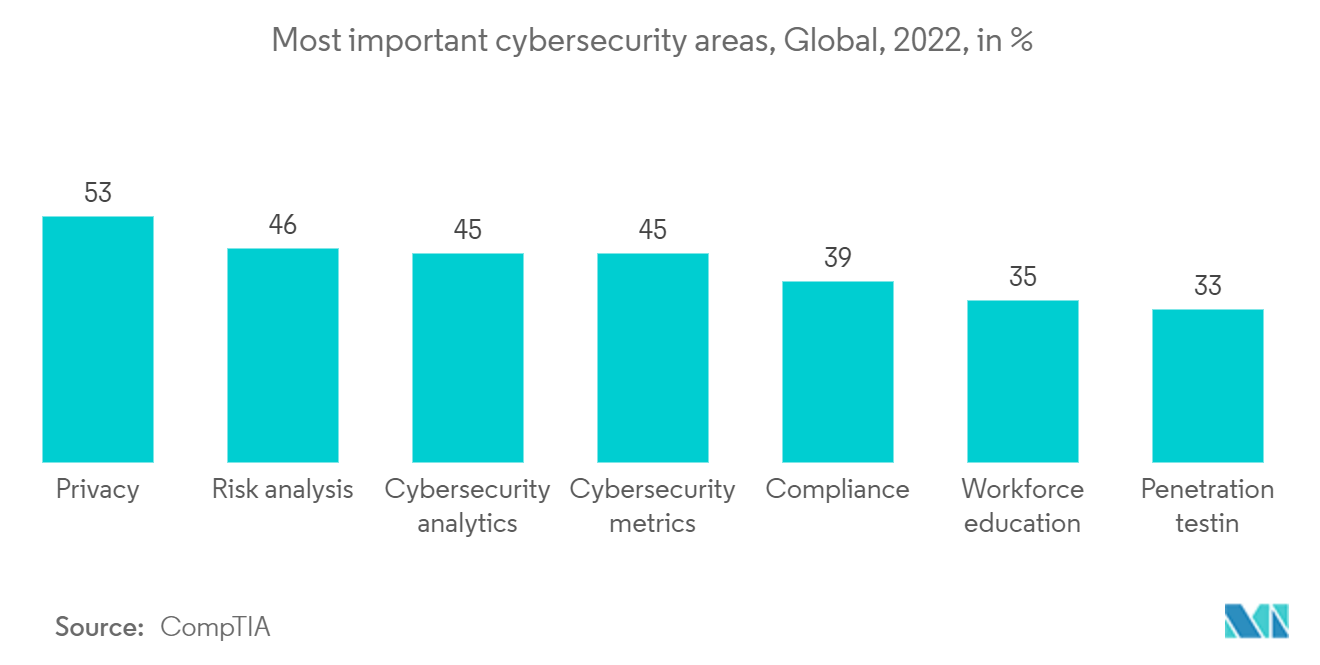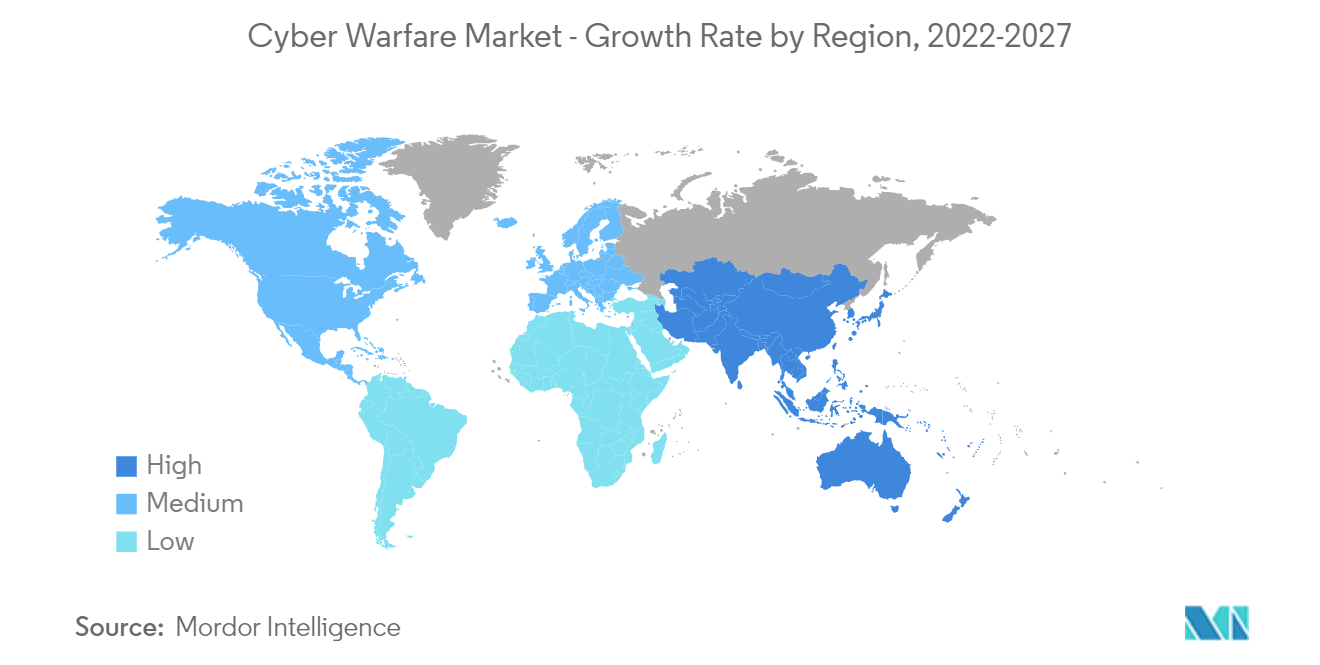Market Trends of Cyber Warfare Industry
This section covers the major market trends shaping the Cyber Warfare Market according to our research experts:
Increasing Concern Regarding National Security
- Cybersecurity is a crucial national security issue. It impacts the public and private sectors and spans a wide range of national security topics, whether terrorism, crime, or state and industrial espionage. The growing technological development in IT and the capabilities of cyber weapons leading to disruption to national security are continuously reshaping the threat landscape.
- As emerging economies accelerate their digitization, cyber warfare emerges as a major growth constraint. Various nations have increased their cybersecurity spending and established units engaged in overcoming cybersecurity challenges to deter cyber espionage and data breaches in the military and defense sectors. As a result, rising demand for cybersecurity is expected to propel the market over the forecast period.
- International organizations and governments have become focused on cybersecurity due to increased security challenges posed by or within cyberspace. This has raised several concerns about national security, driving the need for robust security solutions. Therefore, the government, military, and other agencies are engaged in protecting its digital infrastructure and devices connected to the internet to deter cyberattacks.
- The players in the market are gaining contracts for strengthening national security. For instance, In August 2022, General Dynamics Information Technology (GDIT) obtained the Guard Enterprise Cyber Operations Support (GECOS) contract to support the Army National Guard. The USD 267 million contract is for one year with three option years. The GECOS program provides IT infrastructure, cybersecurity, application hosting, and other services to the Army National Guard Department of Defense Information Network.
- The market is witnessing significant defense initiatives for strengthening national security. For instance, in September 2021, the Air Force’s Information warfare entity started focusing on defending weapon systems from adversary probes as enemies have become more active below the threshold of war, using cyber and digital capabilities to conduct espionage against military and non-military targets while also accessing sensitive systems to disrupt them or sow doubt among users.
- Further, deprecated encryption protocols are being replaced in the national security supply chain. For instance, in January 2021, the US National Security Agency (NSA) published guidelines on updating obsolete encryption protocols for government agencies and suppliers involved in defense and national security. The recommendations (PDF) advise system administrators on detecting and replacing unauthorized or deprecated TLS protocols with ones that meet current standards.

North America Expected to Hold a Significant Market Share
- North America is expected to have a significant market share in cyber warfare. Expanding the cyber defense budget, government initiatives securing computerized framework, and spotlight lighting on reinforcing cybersecurity approaches are the key driving elements affecting the territorial demand in the region. Besides, the foundation of cybersecurity units and deploying powerful cybersecurity systems inside government organizations, military, and guard parts further drive business sector development.
- As a major developed economy, the United States is highly dependent on the internet and therefore is highly exposed to cyberattacks. Moreover, the country has substantial capabilities in defense due to advanced technology and a large military budget. Malicious hacking from domestic or foreign enemies remains a constant threat to the United States. The country has developed significant cyber capabilities in response to these growing threats.
- The US federal government has taken several initiatives against cyberattacks and is continually demonstrating its cyber warfare capabilities to help reduce sophisticated attacks. It is also engaging in proactive training and development for military personnel in the US Army Cyber Center of Excellence (CCoE), which is the US Army's force modernization proponent for cyberspace operations, signal/communication networks, and information services. Furthermore, an increased defense budget to safeguard cyberspace and protect federal systems and critical infrastructure from cyberattacks is anticipated to propel market growth.
- Additionally, in April 2021, as part of the United State's effort to safeguard US critical infrastructure from sophisticated and persistent cyber threats, the US Department of Energy (DOE) launched an initiative to improve the cybersecurity of electric utilities' industrial control systems (ICS) and secure the supply chain of the energy sector. This 100-day plan is a coordinated effort between the electricity industry, the Department of Energy, and the Cybersecurity and Infrastructure Security Agency (CISA).
- Moreover, the Canadian government is taking initiatives in collaboration with the Canadian military and North American Aerospace Defense Command (Norad) to identify and mitigate cyber threats to critical civilian sites. Critical sites, like the power grids, water treatment plants, or traffic systems, are especially focused on preventing attacks that may shut down civilian infrastructure.

